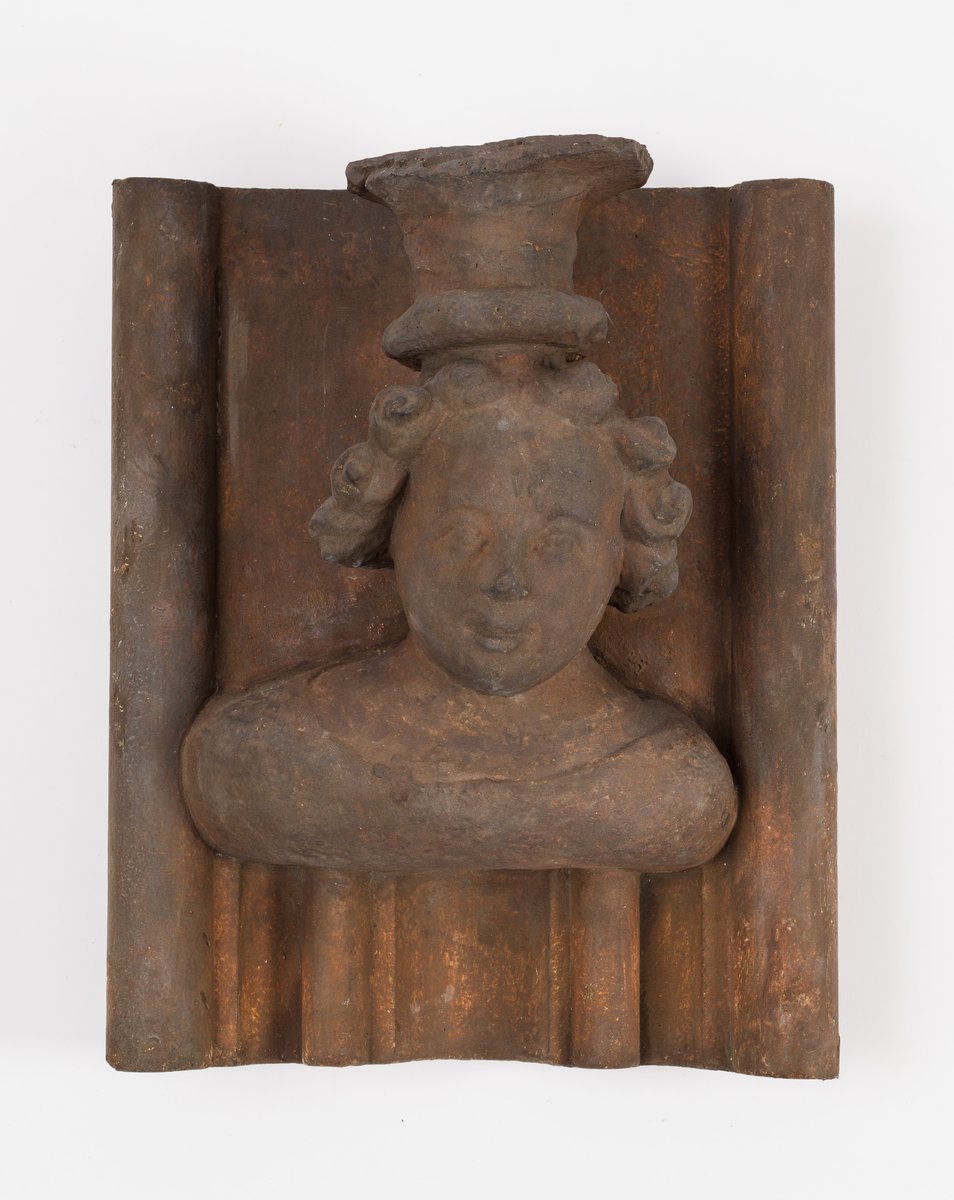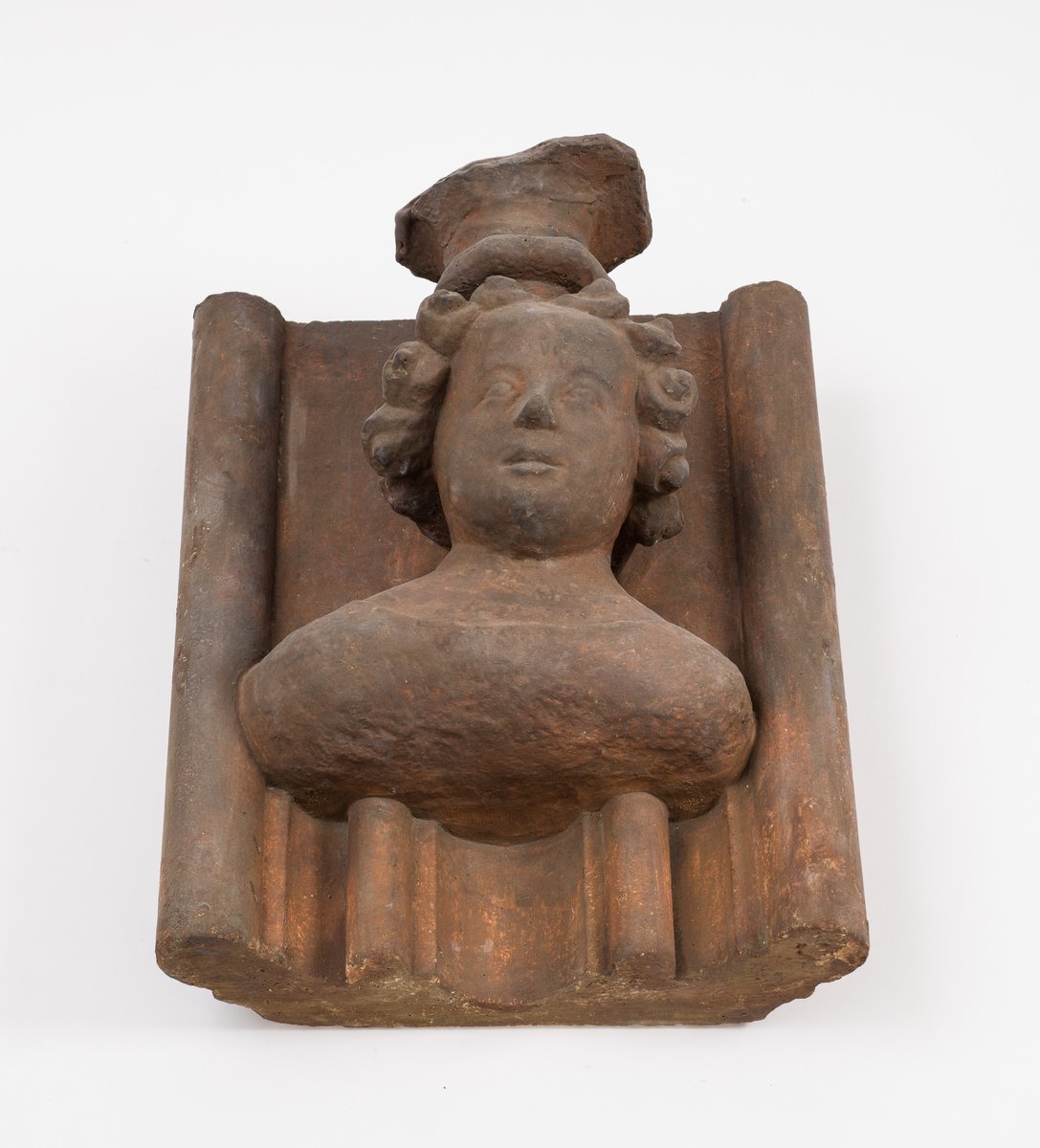Corbel from the Schöner Brunnen
Heinrich Beheim (workshop of), Johann Göschel (cast maker)- Artist
-
Heinrich Beheim
(workshop of)
before 1360 – 1403/1405
Johann Göschel
(cast maker)
Nürnberg
- Dated
- 1390s (original), 1907 (cast)
- Classification
- sculpture, plaster cast
- Medium
- plaster cast
- Dimensions
- 41 × 34 × 22 cm
- Inv.no.
- Rg.36
- Department
- Sculptures - Plaster casts
- Current Location of the Original Artwork
- Germany, Nuremberg, Germanisches Nationalmuseum
The Schöner Brunnen (beautiful fountain) on the main square of Nuremberg was built between 1385 and 1396 under the direction of master architect Franz Pfintzing and the stone-carving workshop of Heinrich Beheim. The fountain’s construction was first initiated by Charles IV, Holy Roman emperor (1355–1378), under whose patronage the city enjoyed its first golden age. The graceful fountain with a height of about seventeen metres imitates a Gothic church tower and is decorated with forty colourful, painted sandstone sculptures. The iconographic programme contains both antique and Christian elements (Old Testament prophets, Fathers of the Church and the Evangelists, as well as antique philosophers), supplemented with the contemporary figures of the seven German prince-electors. Under the prince-electors, the consoles of the fountain are embellished with sixteen corbels decorated with busts; plaster casts have been made of three. The gilded sandstone busts presumably depict Nuremberg citizens of the time, but their identification is not possible.

